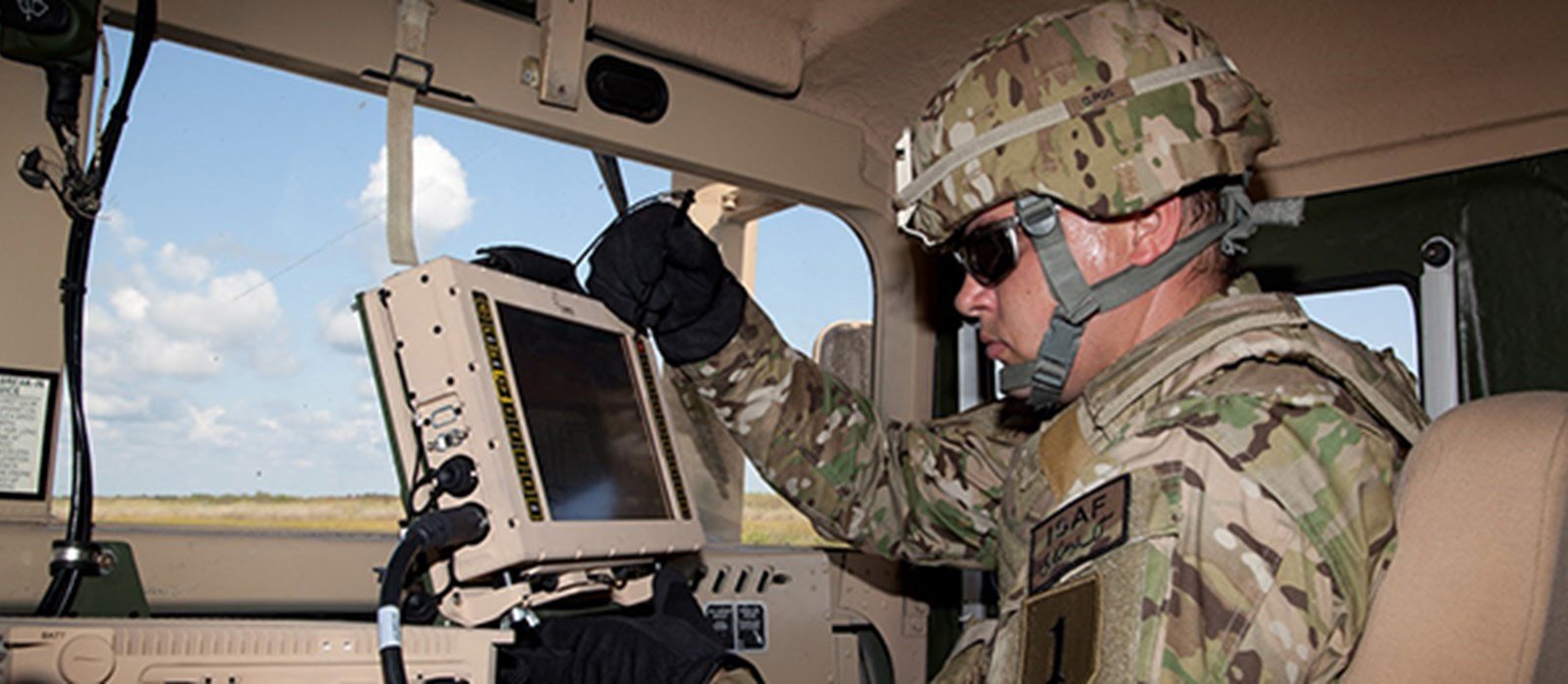
The Mounted Family of Computer Systems II Operates in Contested Environments, controlling robotic vehicles and unmanned aerial systems.
The Army’s mission command computing system, called the Mounted Family of Computer Systems II (MFoCS II), is familiar to many, performing as promised. Part of Army network modernization efforts under Program Executive Office Command, Control and Communications–Tactical (PEO C3T) and Program Manager, Mission Command, MFoCS II is a family of common computing and display systems that consolidates a range of programs and military computing users.
Leonardo DRS has delivered 70,000 of the tactical computing units for ground combat vehicles and command post operations. The company received another production delivery order worth $106 million this past summer, in the third year of a five-year contract supporting the Army’s Mounted Computing Environment.
MFocs II supports the continued fielding and upgrades of the Army’s Joint Battle Command–Platform (JBC-P), featuring critical capability upgrades, cybersecurity improvements and multi-touch displays. There are significant performance enhancements for the platform computing server as the Army continues to improve the JBC-P systems used for tactical situational awareness such as Blue Force Tracking and in-transit visibility logistics tracking.
However, even with those improvements and capabilities there is MFoCS II capacity still to be untapped. Some international customers are employing the system in new and different ways.
New, Emerging Capabilities
Through the Army’s Joint Battle Command–Platform (JBC-P) software/system (the latest version of Force XXI Battle Command Brigade and Below, better known as Blue Force Tracker), MFoCS provides soldiers with a fast satellite network and map updates so they know their position, as displayed by the blue dot on the screen. What happens when the Global Positioning System (GPS) signal is lost due to jamming or other scenario, however, will be addressed in the future by what’s known as Assured Position, Navigation, and Timing (APNT). This provides the ability for soldiers to be off the GPS grid yet maintain their location.
“Currently embedded in MFoCS is a SAASM (Selective Availability Anti-spoofing Module) in the MFoCS processor unit and MFoCS rugged computing tablet,” explained Al Mosher, Leonardo DRS senior director for international strategy. “If you lose that signal in any way, no matter how it’s interrupted, this emerging APNT capability will know your last location and help you navigate until you regain your GPS signal.”
This is a capability that could be available to the Army in another iteration of MFoCS II or in a future version of MFoCS.
Another real-world application for MFoCS II not presently being used is situational awareness around the tracking of robotic combat vehicles (RCVs). MFoCS II can simultaneously handle voice, data, and video out of the same box. For RCVs, that means that whatever waveform is being used to operate the robot can also possibly be controlled through MFoCS II.
If the robot has a video component to it, then MFoCS can display, record, and store that video, as well as pass it between platforms as long as the network pipes are big enough. And if they aren’t then the system can send photos instead.
Platform Networking of Sensors
With its voice, data, and video capability, MFoCS can use its battle management functionality to integrate other tactical sensors. In one example, Leonardo DRS has integrated Raytheon’s Boomerang shot detection system with the commercial version of MFoCS for the Indonesian military.
“When a weapons system fires and is detected by the shot detection sensor, the MFoCS display shows you where that shot came from and what type of weapon it was,” said Mosher, noting that this integrated system is being fielded now. “It also has a slew to cue capability and if you have a weapons system on that platform it will slew your weapon system over to the direction of where the shot came from so you can engage it or observe it.”
In the area of video, MFoCS can integrate sensors placed around the outside of a vehicle to provide 360 degrees of situational awareness for the occupants. Those types of tactical sensors can all be managed through MFoCS via the processor unit or tablet.
In the same vein, MFoCS can take a feed from a command post receiving video from an unmanned aerial system (UAS) and display it to the occupants of a vehicle. This can be done with whatever ground or aerial remote platform is being used.
In addition, MFoCS can operate as an instant mobile control station for UAS simply by loading the control software for the unmanned vehicle to the MFoCS management system. Leonardo DRS is doing just that for an unnamed military by integrating such a system with a commercial version of MFoCS onto a tactical vehicle.
The Takeaway
The current MFoCS mission-command program-of-record hardware can address many of the Army’s modernization goals existing today.
“The Army can leverage this hardware to accelerate modernization at a reduced cost and low technical risk,” said Mosher. “It can act as a bridge to fill critical capability gaps that now exist on the way to realization of the Army’s network modernization objectives because it is backwards compatible to what exists today with future growth and flexibility tomorrow.”
Key benefits of leveraging MFoCS are reduced size, weight, power, and cost. In many cases the one MFoCS box can replace six or more other boxes. Because it is agnostic to the operating system software waveform, it is well positioned to help the Army realize its vision for an all-domain warfighting doctrine, with expandability to address the unknowns of tomorrow.
Finally, MFoCs continues to leverage the existing joint battle command platform system and its current footprint of more than 180,000 systems across Army and Marine Corps fleets of both combat and tactical wheeled vehicles.